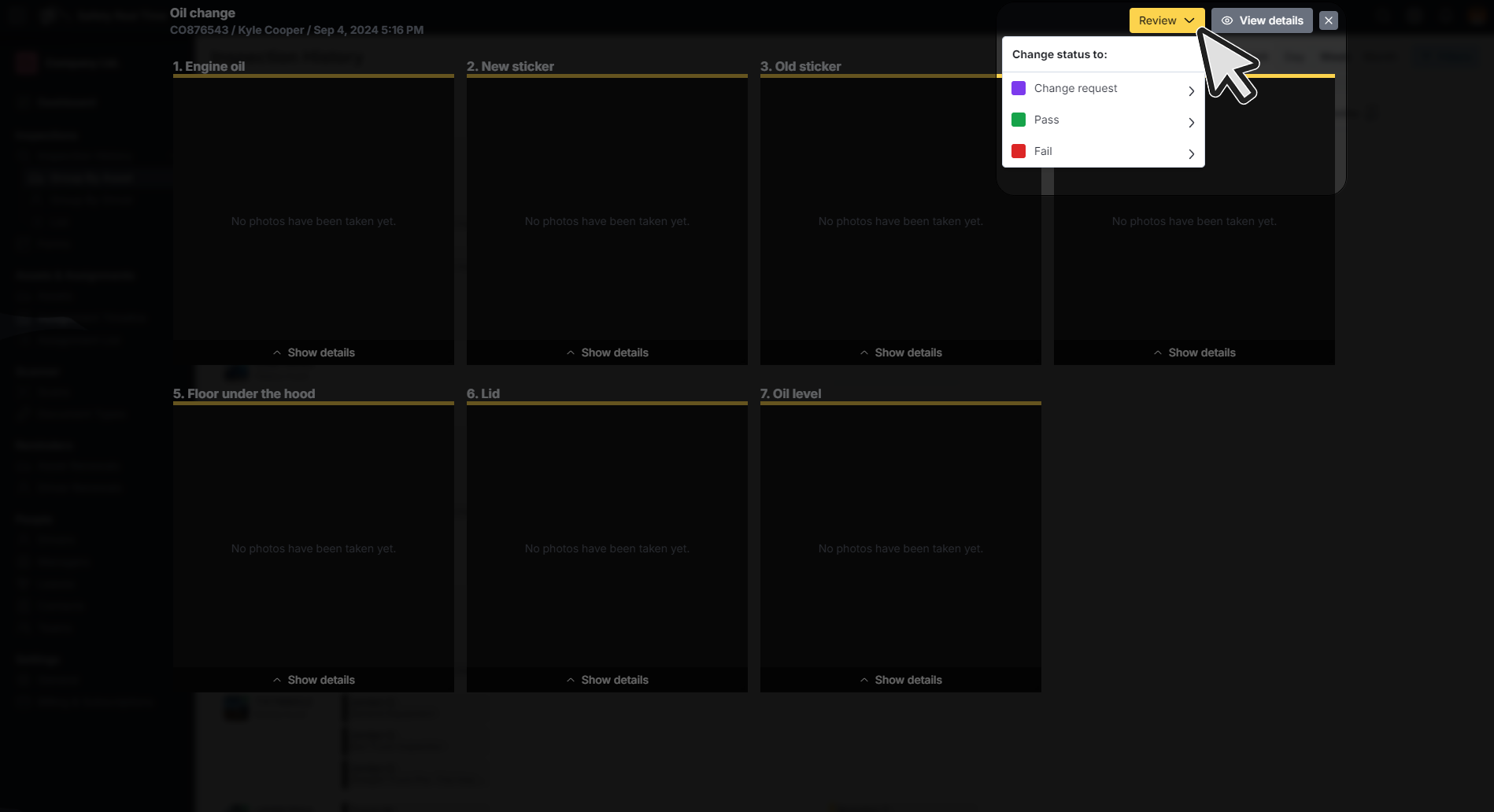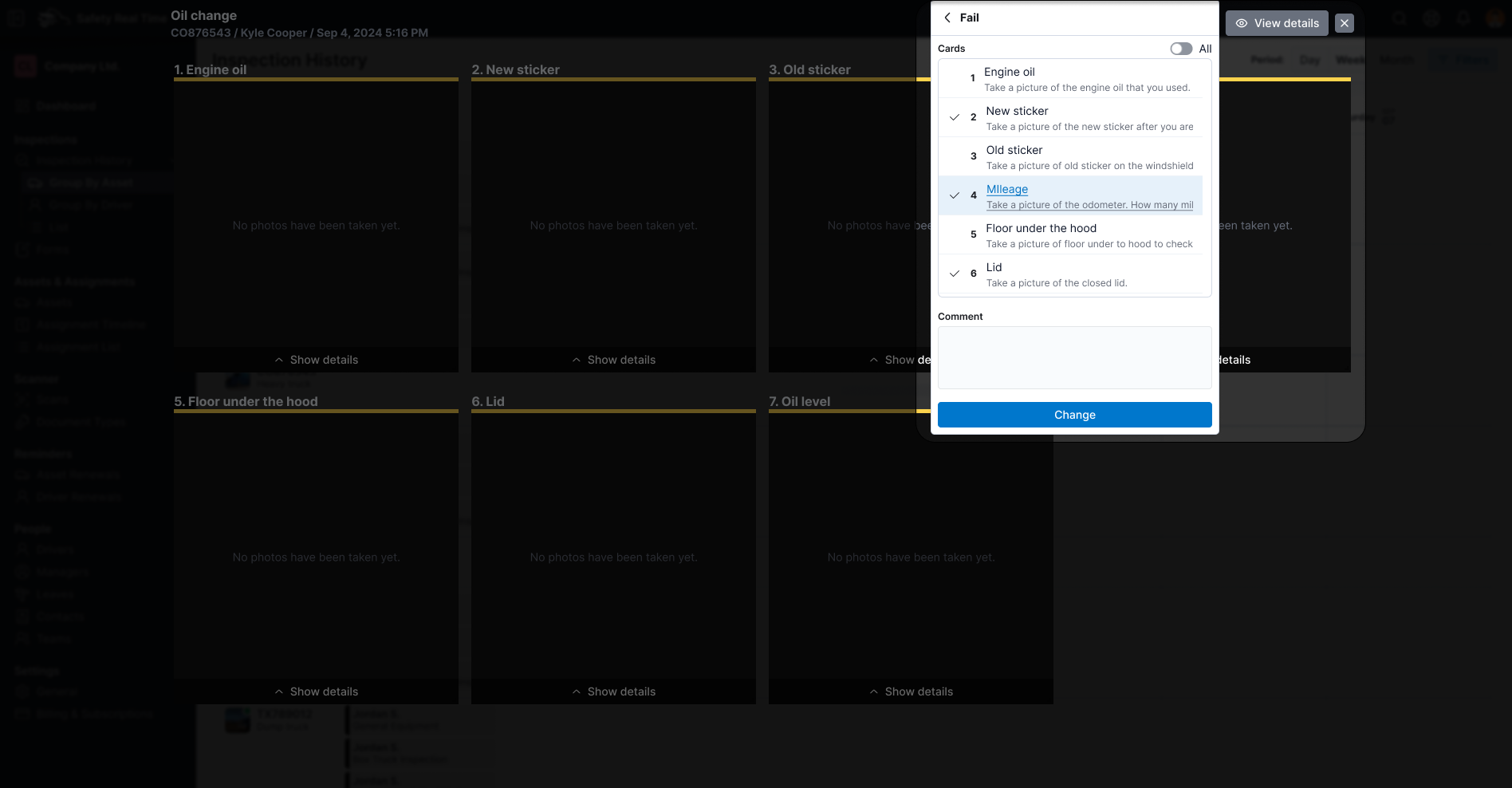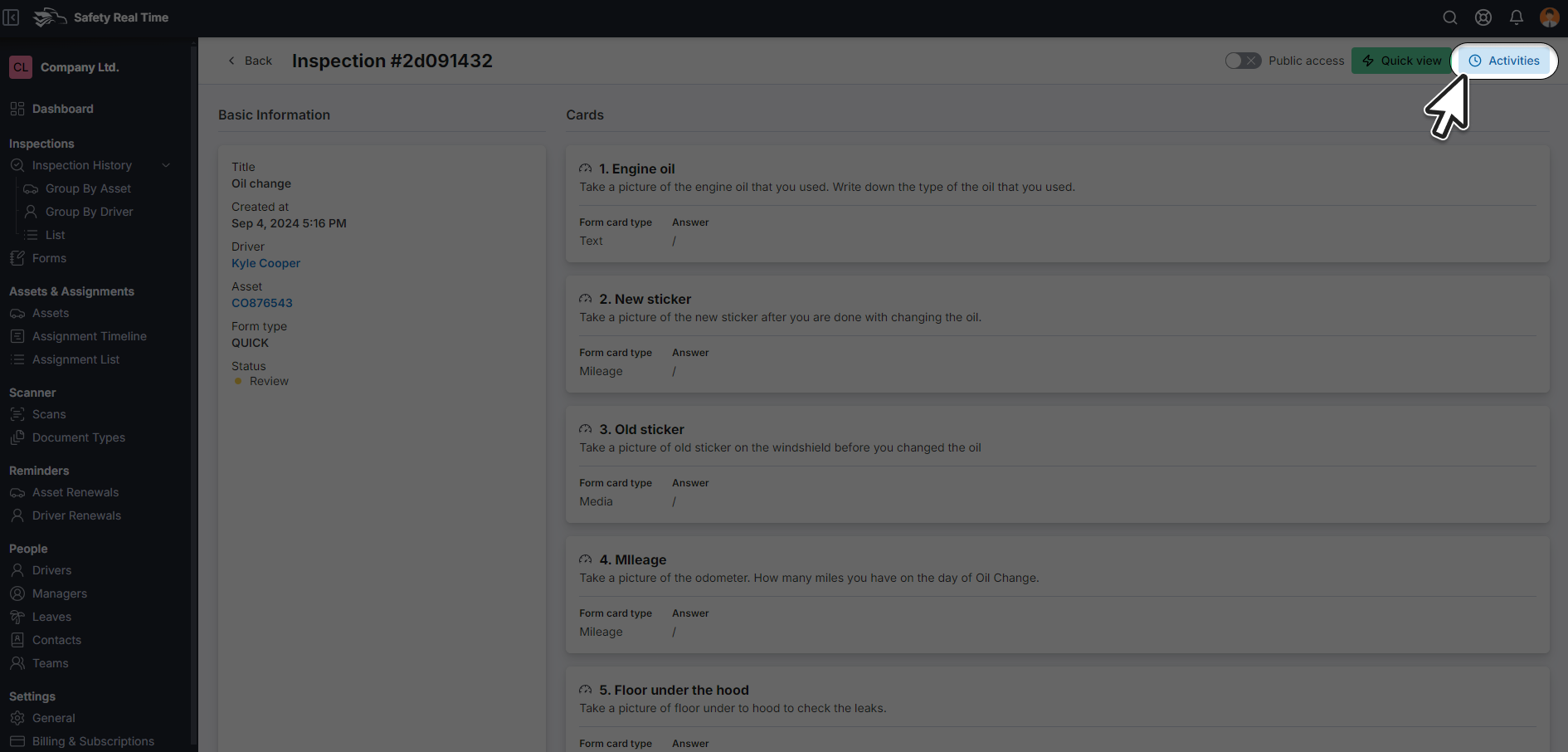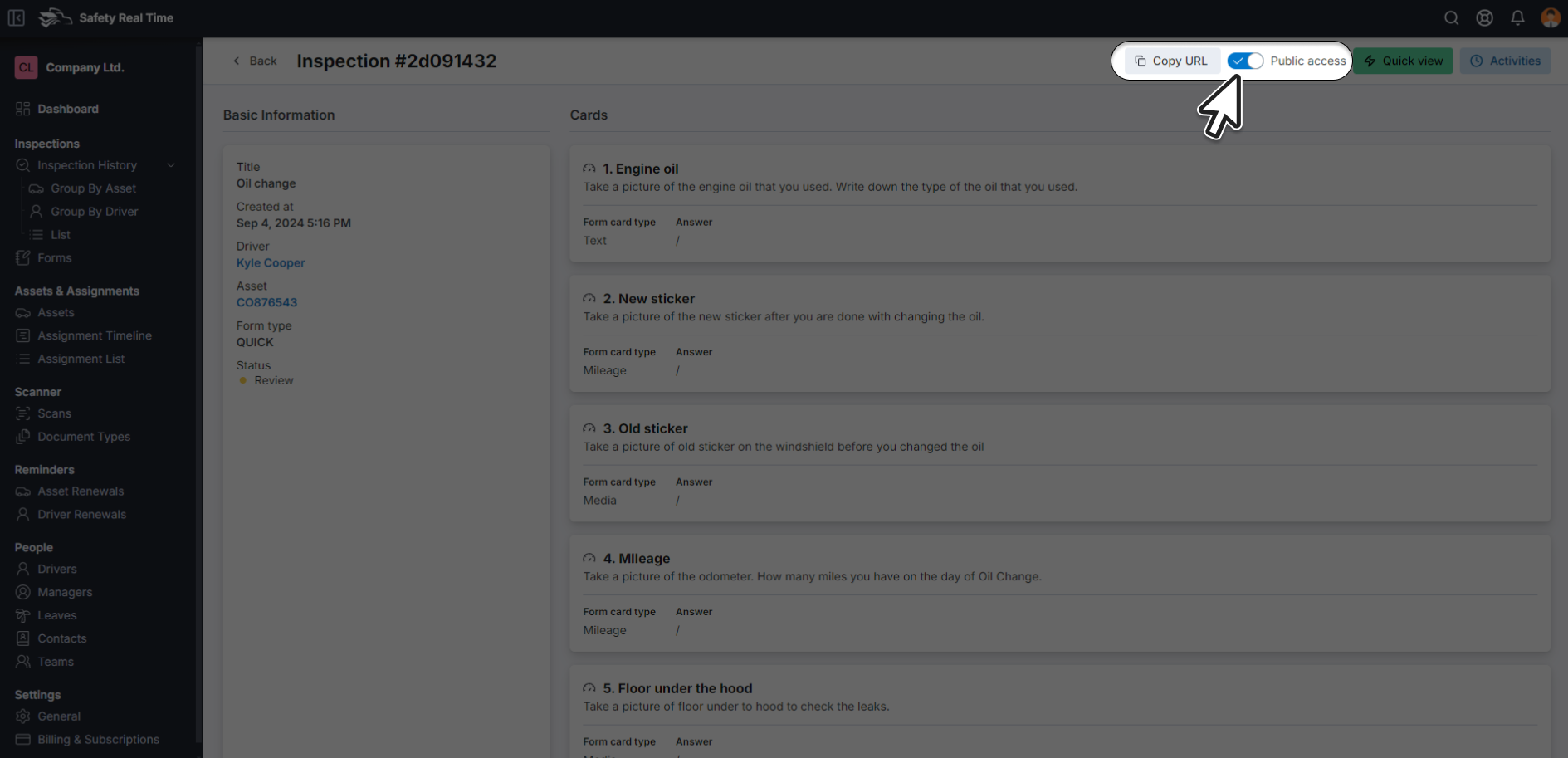Taking Action on Inspection Statuses
Managing the outcomes of inspections is a critical step in maintaining the safety and efficiency of your fleet. Once an inspection is completed, it's essential to take appropriate actions based on its status to ensure that all necessary follow-ups are handled promptly. Safety Real Time provides robust tools for managing inspection statuses, from quick updates to detailed reviews. Here's how to effectively take action on inspection statuses within the platform.
1. Using Quick View for Immediate Actions
The Quick View option is designed for fleet managers who need to swiftly assess and update the status of an inspection. Here’s how you can utilize Quick View to take immediate actions:
a. Changing Inspection Status
In the Quick View, you can directly modify the status of an inspection based on the review findings. The available statuses include:
- Pass: Indicates that the inspection was successful, and the asset is safe to use.
- Fail: Signals that the inspection identified issues that need to be addressed before the asset can be used.
- Todo: Marks the inspection as pending, indicating that it needs to be completed or rechecked.
Updating the status immediately in Quick View helps maintain accurate and up-to-date records of your fleet’s condition.

b. Adding Comments
If necessary, you can also add comments in the Quick View. Comments are useful for providing additional context, such as specific observations, recommendations, or instructions for follow-up actions. This helps ensure that all stakeholders are informed about the inspection results and any next steps required.
For example, after marking an inspection as "Fail," you might add a comment detailing the specific issues found, such as "Brake pads need replacement within 48 hours."

2. In-Depth Review with Detailed View
For more comprehensive action-taking, the Detailed View provides a deeper look into the inspection results and history. This is where you can review all previous actions, make the inspection publicly accessible, and decide on further actions.
a. Viewing Action History
The Detailed View includes a complete history of all actions taken on the inspection, such as status changes, comments added, and any maintenance or repairs requested. This historical log is invaluable for tracking the progress of any issues and ensuring that nothing is overlooked.
For example, if an inspection fails and you mark it for follow-up, the action history will log when the follow-up was scheduled and completed, along with any changes in status.

b. Making Inspections Public
In some cases, you may want to share the results of an inspection with a broader audience, such as other managers, external auditors, or regulatory bodies. The Detailed View offers an option to make the inspection publicly accessible. When enabled, this allows others to view the inspection details without needing access to the internal system.
Making an inspection public can be particularly useful for transparency in compliance audits or when coordinating repairs with third-party service providers.

3. Coordinating Follow-Up Actions
After reviewing an inspection, you may need to coordinate follow-up actions, such as scheduling repairs, re-inspecting the asset, or escalating the issue to higher management. Here’s how you can do this effectively:
-
Request Maintenance or Repairs: If an inspection reveals issues, you can use the platform to initiate a maintenance request directly from the inspection record. Documenting this in the inspection history ensures that all steps are traceable.
-
Schedule a Re-Inspection: If repairs are needed, you can schedule a re-inspection to confirm that the issues have been resolved. Update the status once the re-inspection is completed to reflect the current condition of the asset.
-
Communicate with Team Members: Use comments in both Quick View and Detailed View to communicate necessary actions to your team. Clear communication ensures that everyone is on the same page and that follow-ups are handled efficiently.
4. Ensuring Compliance and Safety
Taking timely and appropriate action on inspection statuses is crucial for maintaining both safety and compliance within your fleet. By using the tools provided in Safety Real Time, you can ensure that all inspections are reviewed, documented, and followed up on properly, reducing the risk of accidents and regulatory penalties.